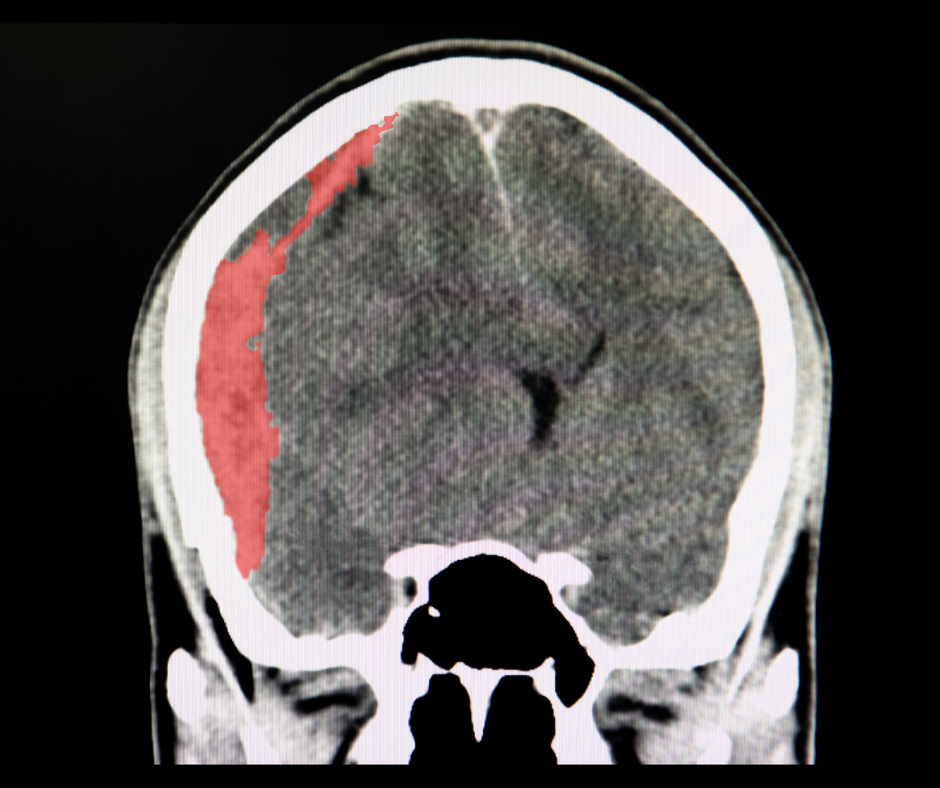Understanding Cognitive Processing Therapy (CPT): A Guide to Healing from Trauma
Trauma can change the way a person thinks, feels, and responds to the world. When something overwhelming happens, it can shake the very core of how we see ourselves, other people, and the future. This is where Cognitive Processing Therapy (CPT) comes in. It’s not just another therapy term — it’s a structured, effective, and deeply supportive way of helping people reclaim their lives after trauma.
If you’ve ever felt stuck in painful thoughts, caught in cycles of guilt, shame, or fear, or like your nervous system is always on “high alert,” CPT might offer a clear pathway forward. Let’s explore what CPT is, why it matters, and how it can bring healing into everyday life.

What Exactly is CPT?
Cognitive Processing Therapy (CPT) is a structured, short-term form of talk therapy that helps people work through the impact of trauma. Unlike general therapy that can cover a wide range of topics, CPT focuses specifically on how trauma has shaped your thoughts and beliefs. It guides you in identifying “stuck points” — rigid, harmful, or unhelpful thoughts — and helps you challenge and reshape them in healthier ways.
For example, someone who has experienced trauma might think:
- “It was my fault this happened.”
- “I can’t trust anyone anymore.”
- “I’m permanently damaged.”
CPT helps you take these painful beliefs, examine them more closely, and build new perspectives that allow for healing, safety, and hope.
Why CPT Works: How Trauma Affects the Brain and Body
When trauma happens, the brain often stores the experience in ways that feel fragmented or overwhelming. The body stays on alert, scanning for danger even when there’s none. Everyday life can start to feel unsafe, even in calm environments.
CPT works by giving your brain a way to “process” what happened. Processing doesn’t mean forgetting or minimizing the trauma — it means helping your nervous system and thought patterns update, so you’re no longer stuck in survival mode. Over time, this makes it easier to concentrate, sleep, connect with others, and feel at home in your own body again.

Who Can Benefit from CPT?
CPT was originally developed for post-traumatic stress disorder (PTSD), but it’s also effective for people who:
- Struggle with self-blame or guilt after trauma.
- Experience intrusive memories or flashbacks.
- Avoid certain places, conversations, or feelings because of triggers.
- Feel disconnected from loved ones.
- Notice constant self-criticism, shame, or feelings of being “broken.”
If any of these resonate with you, CPT could help shift those patterns.
15 Therapist-Approved Ways CPT Can Help You Heal
Below are 15 ways CPT can be life-changing, explained in depth so you can really picture what this therapy offers.

1. Reframes Self-Blame
CPT helps people examine the belief that the trauma was their fault. Many survivors hold onto guilt because it feels easier to blame themselves than to face how powerless they truly were. Through CPT, clients learn to see the event in its full context and acknowledge that responsibility lies with the perpetrator, not the survivor.
Example shifts:
- From “I should have stopped it” → “The person who harmed me made a choice; it wasn’t mine to control.”
- From “If I hadn’t been there, it wouldn’t have happened” → “No one deserves to experience trauma, regardless of circumstances.”
- From “I could have prevented it” → “I did what I could at the time; the responsibility is not mine.”
2. Restores a Sense of Safety
Trauma teaches the body and mind that the world is unsafe. CPT helps challenge the thought that “danger is everywhere” and gradually allows the nervous system to relax again. Over time, you start to feel safe enough to go places, meet new people, and live more fully.
Example shifts:
- “Something bad will happen if I leave the house” → “I have the tools to manage my anxiety, and not every situation is dangerous.”
- “People can’t be trusted at all” → “Some people have hurt me, but others can show me care and support.”
- “I must always be on guard” → “I can assess risk realistically and let myself feel safe in appropriate situations.”

3. Improves Emotional Regulation
Unprocessed trauma often shows up as explosive anger, deep sadness, or emotional numbness. CPT provides a structured way to pause, notice what’s happening, and identify the beliefs fueling the reaction. This makes it easier to regulate emotions and feel in control instead of overwhelmed.
Example strategies:
- Writing down the thought before reacting.
- Practicing calming breathing techniques during CPT sessions.
- Using more balanced self-talk to replace catastrophic thinking.
4. Strengthens Self-Compassion
Many trauma survivors feel unworthy of love or compassion. CPT encourages the practice of talking to yourself in the same way you’d talk to a friend. With repetition, the harsh inner critic softens, making room for kindness and healing.
Example shifts:
- “I’m weak for feeling this way” → “I’ve been through so much, and my reactions make sense.”
- “I should be over this by now” → “Healing takes time, and I’m making progress step by step.”
- “I don’t deserve care” → “I am human, and caring for myself is necessary and valid.”
5. Reduces Avoidance
Avoidance keeps trauma wounds unhealed because the brain never gets the chance to learn that triggers are not always dangerous. CPT gently supports people in facing avoided thoughts and memories, which decreases their power over time.
Example changes:
- Slowly returning to places once avoided.
- Talking about the trauma in a safe, supportive setting.
- Re-engaging in hobbies or social activities that were once cut off.

6. Clarifies Core Beliefs
Trauma can distort core beliefs about self, others, and the world. CPT identifies these “stuck points” and works to replace them with more balanced beliefs. For example, instead of “the world is completely unsafe,” CPT helps you shift toward “there are risks, but I also have ways to protect myself.”
Example belief shifts:
- “I’m unlovable” → “I am capable of giving and receiving love.”
- “People will always hurt me” → “Some relationships can be healthy and safe.”
- “It was all my fault” → “I did the best I could in an overwhelming situation, and I am not to blame for what happened.”
7. Improves Sleep and Rest
When trauma thoughts swirl at night, sleep becomes restless or even terrifying. CPT helps by reducing intrusive memories and teaching the brain that it no longer needs to stay on alert while resting.
Example results:
- Falling asleep more quickly without racing thoughts.
- Fewer nightmares and night sweats.
- Feeling refreshed instead of exhausted in the morning.
8. Supports Better Relationships
CPT doesn’t just help you feel better inside — it also improves how you connect with others. When guilt, mistrust, and avoidance decrease, relationships often become healthier, more open, and more stable.
Example outcomes:
- Increased ability to communicate openly with loved ones.
- Feeling less distant or withdrawn in social settings.
- Rebuilding trust in supportive friendships or partnerships.

9. Reduces Intrusive Memories
Flashbacks and intrusive thoughts can feel like reliving trauma over and over. CPT helps you process the memory so it becomes part of your past rather than something that keeps replaying in the present.
Example improvements:
- Fewer unexpected flashbacks in daily routines.
- Less emotional distress when something reminds you of the trauma.
- The ability to recall memories without being overwhelmed.
10. Restores a Sense of Control
Trauma often leaves people feeling powerless. CPT helps reclaim a sense of control over your thoughts, feelings, and choices. Instead of feeling like life “just happens,” CPT empowers you to create new directions.
Example benefits:
- Making confident decisions without paralyzing self-doubt.
- Handling unexpected stressors more calmly.
- Feeling in charge of your healing journey.
11. Increases Daily Functioning
When trauma takes up mental and emotional space, everyday life can feel draining. CPT helps clear that mental clutter, allowing people to focus better at work, school, and home.
Example changes:
- Improved concentration on tasks.
- More energy for daily responsibilities.
- Greater motivation for hobbies and interests.

12. Strengthens Problem-Solving Skills
CPT teaches structured ways to break down overwhelming problems. This helps shift from reacting emotionally to responding thoughtfully, which makes challenges feel more manageable.
Example tools:
- Identifying stuck points before acting.
- Writing out multiple solutions and choosing the most balanced one.
- Replacing black-and-white thinking with more flexible perspectives.
13. Helps Reconnect with Identity
Trauma often causes people to lose touch with who they are. CPT creates space to rediscover values, strengths, and goals that may have been overshadowed by pain.
Example rediscoveries:
- Remembering hobbies or passions that were once fulfilling.
- Reconnecting with cultural or spiritual practices.
- Defining yourself by your strengths, not just your trauma.
14. Builds Resilience for the Future
CPT not only heals past wounds but also equips you with tools for future stressors. This resilience makes it easier to handle challenges without slipping back into old trauma patterns.
Example skills:
- Recognizing unhelpful thoughts quickly.
- Using balanced coping strategies in stressful situations.
- Believing in your ability to bounce back after setbacks.

15. Offers Hope and Healing
Perhaps the most important benefit is the renewed sense of hope. CPT helps survivors see that healing is possible, that they are not broken, and that life can feel meaningful again.
Example reflections:
- Looking forward to future goals instead of fearing them.
- Feeling more optimistic about relationships and opportunities.
- Trusting in your ability to build a fulfilling life.
How CPT Rewires the Brain 🧠
One of the most powerful aspects of CPT is how it actually changes the way your brain processes information. Trauma can keep your nervous system stuck in “survival mode,” with your amygdala (the fear center of the brain) firing constantly, and your prefrontal cortex (the logic and reasoning part) struggling to keep up. This is why people with PTSD often feel hijacked by flashbacks, intrusive thoughts, or overwhelming emotions. CPT works by strengthening the “bridge” between these two parts of the brain, helping your logical, grounded self step in when your survival brain wants to take over. Over time, this doesn’t just reduce symptoms — it actually gives your brain new, healthier patterns to follow.
- Imagine it like rerouting traffic: instead of your thoughts speeding down the same fear-based highway, CPT helps you build new roads where safety and reason have the right of way.
- This is why clients often report not just “fewer symptoms,” but a whole new way of experiencing themselves and the world.
Why Facing Thoughts Feels Scarier Than Facing Memories 😨
Many people wonder why CPT focuses so heavily on thoughts instead of just talking through the memory itself. Here’s the thing: trauma memories are painful, but often it’s the beliefs tied to those memories that linger and sting the most. For example, someone who survived a car accident might think, “I should have prevented it,” or “I’ll never be safe again.” These thoughts can feel scarier than the actual memory, because they change how you see yourself and the world. CPT helps you gently challenge these beliefs without shame, showing you how to separate what happened from what you’ve been telling yourself about what it means.
- Once those beliefs shift, the memory loses its grip.
- It’s not about erasing your story, but about reclaiming the narrative so it no longer dictates who you are.

Healing Isn’t About Forgetting. It’s About Reclaiming ✨📖
Cognitive Processing Therapy is not about erasing the past or pretending your trauma never happened. It’s about learning to work with the thoughts and beliefs that have kept you stuck, giving yourself permission to step into a new chapter with more clarity, peace, and self-compassion.
At KMA Therapy, we know trauma recovery isn’t a straight line, and you don’t have to walk it alone. Our therapists are here to help you make sense of what you’ve been through, gently guide you through the CPT process, and support you as you rediscover your own resilience.
💙 With care, from all of us at KMA Therapy






